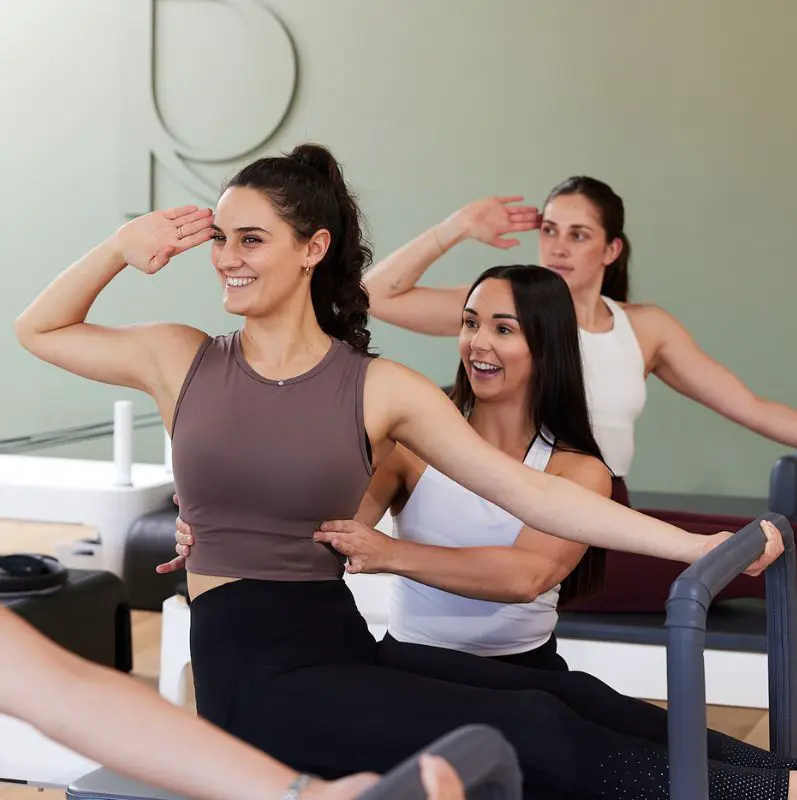Pilates Breathing Techniques: The Secret to Stronger Core Workouts
- HA NA-BI
- Aug 26
- 3 min read
Table of Contents

Introduction
Want stronger abs and better posture? Start with your breath.
Pilates is known for sculpting strong, lean muscles—especially around your core. But there’s one element that often gets overlooked: breathing. Mastering Pilates breathing techniques can help you engage muscles more effectively, improve control, and get more out of every move.
Why Breathing Matters in Pilates
More than just inhale and exhale
In Pilates, breathing isn’t just about oxygen—it’s a tool to enhance movement. It helps:
Activate deep core muscles
Maintain rhythm and flow
Prevent holding tension in the neck and shoulders
Improve mind-body connection

Basics of Pilates Breathing
Coordinating breath with movement
Inhale through the nose to expand the rib cage
Exhale through the mouth to engage the deep abdominals
Match breathing to movement phases (e.g., inhale to prepare, exhale during exertion)
Lateral Breathing Explained
The signature Pilates breathing style
Lateral breathing focuses on expanding the rib cage sideways while keeping the belly relatively flat. It allows you to:
Maintain abdominal engagement during the workout
Improve lung capacity and control
Avoid belly-breathing, which can weaken core activation
How to practice:
Place hands on your ribs
Inhale and feel ribs expand sideways
Exhale fully, drawing ribs back in

How Breathing Supports Core Activation
Engage your transverse abdominis
Every time you exhale with control, your deepest core muscles (like the transverse abdominis) naturally activate. This helps:
Stabilize your spine
Flatten your abs
Support better form in exercises like the hundred, roll-up, or plank
Common Mistakes to Avoid
Breath-holding: Creates tension and blocks core activation
Shallow chest breathing: Doesn’t engage the diaphragm fully
Forcing the breath: Should be smooth, not strained
Losing breath-movement connection: Breaks rhythm and focus
Pilates Breathing for Beginners
Start slow and be consistent
Practice breathing before adding movement
Use cues like “inhale to expand, exhale to contract”
Focus on quality over speed
Record yourself or use mirrors to track breathing and posture
How to Practice Breathing Outside Your Pilates Sessions
Bring the benefits into daily life
Practice lateral breathing while walking or sitting at your desk
Use Pilates breathing to calm nerves or manage stress
Try it during other workouts like yoga, strength training, or stretching
Set reminders to take a few mindful breaths every hour
Breathing in Advanced Pilates Movements
Level up your control and endurance
Advanced movements like teaser, boomerang, and jackknife require precise breath control
Use breathing to maintain alignment during complex transitions
Proper breathing reduces fatigue and supports stamina in longer sequences
Did You Know?
Joseph Pilates believed breathing was the most important part of any exercise
Proper breathing reduces cortisol (stress hormone) during workouts
Pilates breathing is often used in physical therapy for posture and back pain
Conclusion
Pilates breathing is the hidden powerhouse behind every effective core workout. Whether you're a beginner or seasoned practitioner, focusing on your breath can elevate your results, deepen your practice, and protect your body from strain. It’s not just about moving—it’s about moving with intention.
FAQs
1. Can I do Pilates without focusing on breathing?
You can, but you won’t get the full benefits of core engagement and control.
2. What’s the difference between yoga and Pilates breathing?
Pilates uses lateral ribcage breathing, while yoga often focuses on belly or deep diaphragmatic breathing.
3. How long does it take to learn proper Pilates breathing?
With regular practice, most people improve within a few sessions.
4. Is it okay to feel dizzy during breathing practice?
Slight light-headedness can happen if you over-breathe. Stop and breathe naturally if this occurs.
5. Can Pilates breathing help with stress?
Yes, controlled breathing lowers stress and improves mental clarity.
Join a Pilates Class
💪 Ready to strengthen your core from the inside out? Learn Pilates breathing and more in our guided sessions.
📲 WhatsApp us to book a class or get a trial session!
Breathe better. Move better. Feel stronger.













Comments